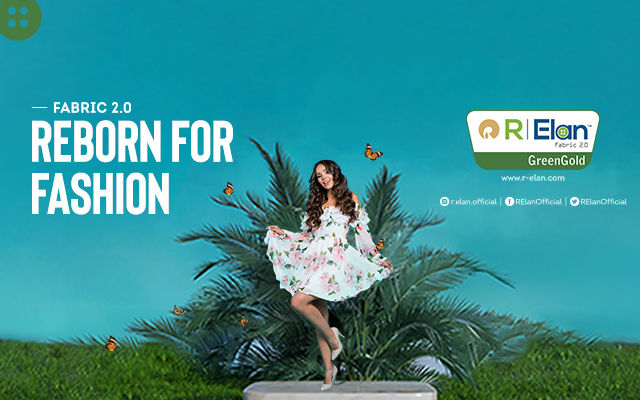In today’s world, where sustainability is becoming increasingly important, industries are seeking eco-friendly alternatives to traditional methods. The textile industry, in particular, has been under scrutiny due to its environmental impact. Fortunately, advancements in technology have paved the way for more sustainable solutions, such as pigment inks in digital textile printing.
Due to advancements in quality, performance, and availability, there is a growing need for digital pigment ink solutions for textile printing. Additionally, pigment inks are a more environmentally friendly option, which draws in more and more companies that care about the environment.
What is Pigment Ink Printing?
Pigment ink printing utilises pigment-based inks as an alternative to conventional dye-based inks. Pigment ink is composed of microscopic solid pigment particles suspended in a liquid carrier. Unlike dye ink, which diffuses, pigment particles remain on the surface of the printing medium. Pigment ink is also referred to as oily ink.
Pigment inks are renowned for their durability and light fastness. They are scratch-resistant, offer better UV resistance, and have water-resistant properties. Photographers, particularly those producing black and white prints, favour pigment inks for their ability to produce a broader range of monochrome shades.
Pigment inks are manufactured using pigment from organic synthesis. The pigment is suspended in a liquid and encapsulated in a synthetic resin. For example, pigment-based black ink is created by combining a dry, powdery substance consisting of carbon particles with a liquid.
Pigment inks are a popular choice for conventional printing. In fact, approximately 60 per cent of all conventionally printed fabrics are produced using pigment ink, according to Smithers.
High-quality pigment ink is made from materials that have reached the “final” stage of the degradation chain. Once the water evaporates after printing, these pigments will not change colour for a very long time. With proper care, they are reported to last hundreds of years.
What are the Benefits of using Pigment Inks?
Manufacturers have invested millions of dollars in developing pigment inks for digital printing. Modern digital pigments produce exceptional finishes on both blended natural and synthetic fabrics. Their versatility in handling various types of fabric sets them apart. Pigment printing can be a reliable and high-quality option for textile printing, as it can bring benefits like:
-
Reduced Environmental Impact and Lower Carbon Footprint: Pigment inks require less water and energy compared to traditional dye-based inks. They often contain fewer harmful chemicals, reducing pollution in waterways. The printing process requires fewer stages with digital pigment inks, saving time and energy by eliminating the need to steam or wash fabrics after printing. This can significantly lower a company’s carbon footprint at a time when the general public, legislators, and customers are increasingly concerned about the environmental impact. Transitioning to digital pigment printing also demonstrates a company’s commitment to operational sustainability and environmental friendliness.
-
Compatibility with Blended Fabrics: Pigment printing excels on mixed materials compared to reactive printing. Currently, there is no other digital ink option for blended fabrics. Moreover, pigment inks are the most adaptable choice, working well with both natural and synthetic materials. Pigment ink is particularly useful for polyester and cotton fabrics, which are increasingly popular in the casual clothing industry, even surpassing sportswear.
-
Excellent Light Fastness: Innovations are enhancing colour fastness, a key factor for the industry. The exceptional light fastness of pigment inks is one of their most notable advantages. For textiles intended for both indoor and outdoor use, digital pigment printing is the preferred option. It is possible to achieve excellent light fastness without compromising wash fastness, and pre-treatment ensures colours remain vibrant and lively for fashion applications.
-
Improved Hand-feel and Colour Quality: The fastness and colour brightness of digital pigment inks have significantly improved, now closely matching the results of reactive and sublimation fabric printing methods. Advances in ink chemistry and fabric pre-treatment techniques have enhanced the quality of printed textiles. Previous limitations of aqueous pigment inks, such as poor wash fastness, can be overcome with proper pre-treatment, ensuring vibrant colours and high-quality finished fabrics. Although additional handling is required, the result is smooth, soft textiles that meet the stringent standards of the fashion industry.
-
Improved Longevity and Operational Efficiency: Pigment inks are continually evolving to become more efficient and compatible with an increasing number of printing devices, minimising downtime. Many vendors use cutting-edge nanotechnology and improved binders to reduce particle size, solving issues with clogged nozzles and downtime. As a result, business operates effectively and seamlessly.
-
Non-Toxic Formulation: Pigment inks are often formulated to be non-toxic and safe for textile printing, meaning they do not contain harmful chemicals that could pose risks to workers or consumers. Industries prioritising the well-being of their employees and customers find pigment inks to be an ideal choice, offering peace of mind that the printing process is both eco-friendly and safe for all involved.
-
Water Resistance: Pigment inks offer greater water resistance than dye-based inks, making them suitable for printing wall art that may be exposed to moisture. Whether in a bathroom, kitchen, or another high-humidity area, pigment inks ensure that prints remain vibrant and colourful.
What are the Challenges of using Pigment Inks?
While pigment inks offer numerous benefits for sustainable digital textile printing, they also come with their own set of challenges. Understanding these challenges is essential for businesses and manufacturers looking to adopt pigment inks as a printing solution. Some of the challenges include:
-
Perceived Lack of Vibrancy: Despite advancements in technology, some may still perceive pigment inks as less vibrant compared to dye-based inks. However, modern pigment ink formulations are continuously improving colour reproduction, resulting in more vibrant and eye-catching prints. Additionally, creative design choices and proper colour management techniques can further enhance the visual appeal of prints produced with pigment inks.
-
Higher Cost: While pigment inks offer numerous environmental and practical benefits, their higher cost compared to dye-based inks can be a challenge for businesses, particularly those with limited budgets. However, it is essential to consider the long-term savings and benefits of using pigment inks, such as reduced waste and increased durability, which can offset the initial investment over time. Moreover, as technology advances and demand for sustainable solutions grows, the cost of pigment inks is expected to decrease, making them more accessible to businesses of all sizes.
-
Slower Adoption: Although the demand for sustainable printing solutions is on the rise, the adoption of pigment inks across the textile industry may still face challenges. Factors such as market education, availability of technology, and existing infrastructure can influence the pace of adoption. However, as more businesses recognise the environmental and practical advantages of pigment inks, coupled with consumer demand for sustainable products, the adoption of this innovative printing solution is expected to continue growing steadily. Collaboration between industry stakeholders, policymakers, and technology providers can further accelerate the adoption process, driving positive change within the textile industry.
Advancements in Pigment Printing Technology
Textile pigment inks have been around for several decades, but the technology has seen significant improvements in recent years. One of the most notable advancements is the introduction of water-based inks. These inks, composed of pigments suspended in a liquid, are printed onto the fabric using an inkjet printer.
Digital textile printing represents a major advancement in textile pigment inks. This technology enables more complex designs, a wider variety of colours, and faster printing times. It has made custom and small-scale textile printing more affordable, creating new opportunities within the industry.
As digital textile printing progresses, new technology and chemistry have enabled the production of prints at high speeds using various types of inks. These advancements allow for the use of pigment inks at high speeds, marking an exciting development in the industry. Pigment inks offer a significant opportunity to transition from traditional to digital printing, providing environmental benefits and simplifying the printing process. Unlike before, when digital printing involved multiple steps and equipment, pigment ink printing now offers a streamlined process, drastically increasing printing speeds. Traditional digital printing methods often required several steps, such as pre-coating, drying, printing, steaming, washing, and finishing, which consumed time, energy, water, and created waste.
Lastly, beyond inks and printheads, machinery manufacturers in the industry are introducing innovative solutions to address significant challenges in the pigment printing market. These solutions aim to align printed pigment production with sustainable and efficient manufacturing practices.
Conclusion
Alongside the home decor and other markets, the fashion and clothing industry is also anticipated to witness a rise in the use of textile pigment inks. Thanks to technological advancements, textile pigment inks will continue to be an affordable, high-quality option for textile printing, enabling the production of distinctive, customised designs.
Pigment inks represent a sustainable and versatile solution for digital textile printing. With their reduced environmental impact, excellent colour fastness, and compatibility with various fabrics, they are increasingly becoming the preferred choice for eco-conscious manufacturers and designers. While challenges such as cost and vibrancy persist, ongoing advancements in technology are expected to overcome these barriers, driving the widespread adoption of pigment inks in the textile industry.
Digital pigment printing is poised to revolutionise the textile printing industry as more manufacturers embrace one-step digital textile printing to speed up production and reduce time to market. With faster speeds and improved durability, pigment ink technology is overcoming major obstacles to growth in the digital textile printing market. As industrial printers increasingly recognise the benefits of pigment printing over traditional methods like reactive, acid, and disperse printing, the pigment printing sector is expected to make significant advancements in the near future.



_Big.jpg)





Comments